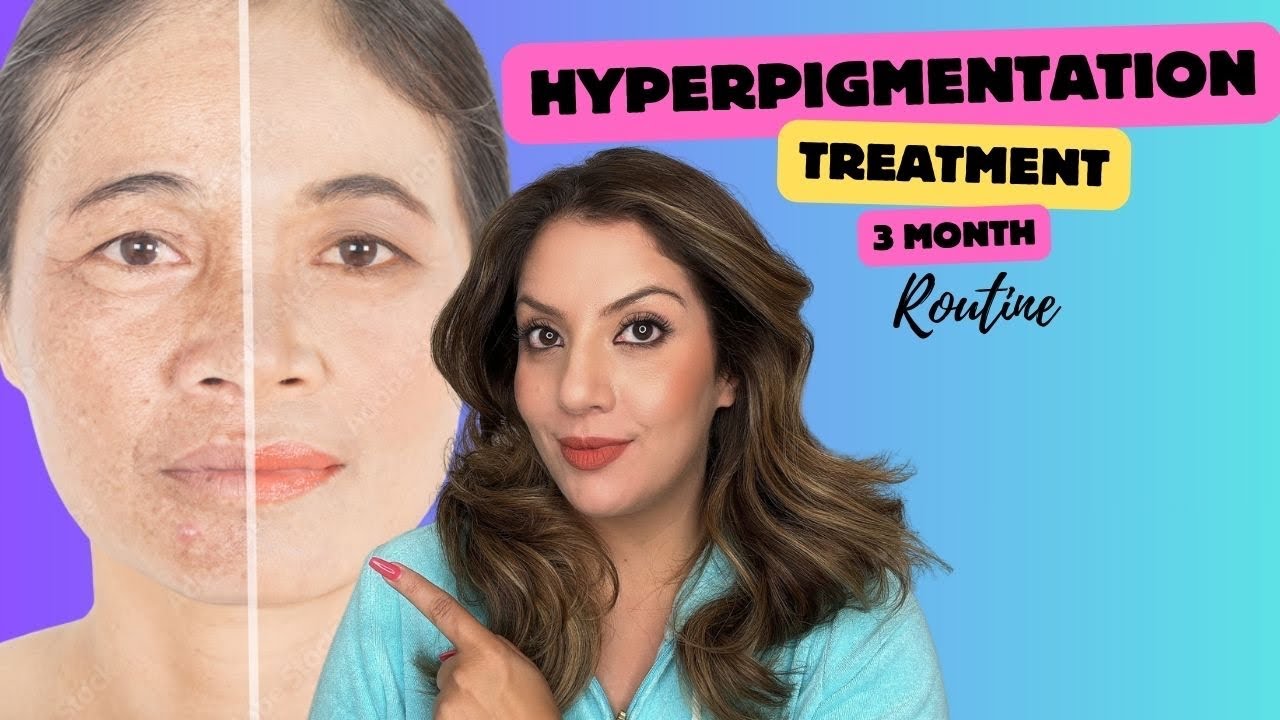Melasma - चेहरे पर काले धब्बे | Medicine | Treatment | Doctor | Pharmacy | Nursing | MBBS | BHMS
Summary
TLDRIn this video, Akash Gaur discusses the medical condition Melasma, characterized by dark brown or black spots on the skin, especially on the face. He explains the causes of the condition, such as sun exposure, hormonal imbalances, stress, and the use of certain medications. The video covers the role of melanocytes in producing melanin, which determines skin color, and how their damage can lead to dark spots. Akash also shares treatment options, including creams like Azelic, Systen, and Hydro-cortisone, as well as the benefits of Vitamin C serum for controlling hyperpigmentation.
Takeaways
- 😀 Melasma is a skin disorder causing brown or black spots on the face, commonly referred to as black spots.
- 😀 The main cause of melasma is the overproduction of melanin in the skin, which is produced by cells called melanocytes.
- 😀 There are three main types of melasma: epidermal, dermal, and mixed melasma.
- 😀 Sunburn, hormonal imbalances, stress, contraceptive pills, and harmful cosmetic products are common triggers for melasma.
- 😀 Melanin helps protect the skin from UV damage by darkening the skin, but damage to melanocytes can result in dark spots.
- 😀 Skin hydration and using natural remedies like turmeric and honey can help improve melasma and prevent further damage.
- 😀 Diagnosis of melasma can involve tests such as melanin level tests, Wood's Lamp method, and skin biopsy.
- 😀 Treatment options for melasma include azelaic acid cream, sustained release cream, and hydrocortisone cream (under doctor’s guidance).
- 😀 Vitamin C serum helps reduce hyperpigmentation and protects the skin from further sun damage.
- 😀 Preventative measures include proper hydration, avoiding sun exposure, and using sunscreen to protect the skin.
- 😀 For further education, you can download the medical app offering courses, notes, and video lectures on diseases and treatments.
Q & A
What is Melasma?
-Melasma is a skin disorder characterized by the appearance of brown or black spots, usually on the face. These spots occur due to the overproduction of melanin, the pigment responsible for skin color.
What causes Melasma?
-Melasma can be caused by several factors, including prolonged sun exposure, hormonal changes (such as during pregnancy or due to contraceptives), stress, hormonal imbalances, and the use of harsh cosmetic products.
How does sun exposure affect the skin in the context of Melasma?
-When the skin is exposed to intense sunlight, melanocytes (cells that produce melanin) can be damaged, leading to the formation of dark spots or Melasma on the skin.
What role do melanocytes play in the formation of Melasma?
-Melanocytes are special skin cells that produce melanin. In Melasma, when these cells are damaged or destroyed, it leads to the formation of dark or brown spots on the skin.
What are the different types of Melasma?
-There are three main types of Melasma: epidermal, dermal, and mixed. Each type refers to the depth and location of the pigmentation within the skin layers.
What are the common causes of Melasma in women?
-Common causes of Melasma in women include hormonal changes due to pregnancy, the use of oral contraceptives, and the use of certain cosmetic products that can irritate the skin.
How can stress contribute to Melasma?
-Stress can trigger the production of hormones that disrupt the balance of the skin, leading to the formation of dark spots or Melasma. It may affect the body's ability to regulate melanin production.
What diagnostic methods are used to detect Melasma?
-Common diagnostic methods for Melasma include testing melanin levels, using a Wood lamp to examine skin pigmentation, and performing a skin biopsy if the condition is severe.
What are some treatment options for Melasma?
-Treatment options for Melasma include topical creams like Azelaic cream and Sustin cream, hydrocortisone for inflammation, Vitamin C serums to control pigmentation, and home remedies like turmeric and gram flour.
How does Vitamin C help in treating Melasma?
-Vitamin C helps by reducing hyperpigmentation, controlling excessive melanin production, and promoting skin repair. It also protects the skin from sun damage and improves collagen health.
Outlines

This section is available to paid users only. Please upgrade to access this part.
Upgrade NowMindmap

This section is available to paid users only. Please upgrade to access this part.
Upgrade NowKeywords

This section is available to paid users only. Please upgrade to access this part.
Upgrade NowHighlights

This section is available to paid users only. Please upgrade to access this part.
Upgrade NowTranscripts

This section is available to paid users only. Please upgrade to access this part.
Upgrade NowBrowse More Related Video

Hyperpigmentation treatment at home | Nipun Kapur

Best face serum for glowing clear spotless skin

What the Heck is Sexual Dimorphism?

11 Dark Spot & Hyperpigmentation Mistakes Ruining Your Skin

Accufix Cosmetics FACEWASH & CREAM Review - Skincare Products #foryou #skincare #review

6 Tips For Glass Skin (Science Based)| Tips for Naturally Glowing Skin & Home Remedy | 2024
5.0 / 5 (0 votes)